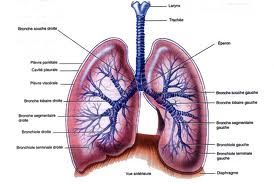Our breath, Qi Gong tool by excellence (part 1 of 3)
What is the link between breathing and the experience we have of ourselves? Between breathing and health, and real well-being? What is the link between breathing and our personal growth and our self-knowledge? To answer these questions, you need more than a rebirth workshop or some exercises found in a magazine. Since there is an intimate connection between our body and spirit, and because of the subtle but poweful ways they interact, we need to have a clear understanding of what the natural breathing mecanism is and how it relates to our muscles, emotions and thoughts if we want it to be efficient and long lasting. This understanding will help us to becoming even more conscious of our own breathing ways. By being aware of our we breathe, we can perceive and feel the various psychological forces at work in our breathing in our life, past and present included. Only by observing can we realize that we use our breathing as a buffer to repress physical and psychological experiences and memories that are too difficult to confront. And finally, it is with this integrated process - clear understanding associated with emotional and senses consciousness - that we can feel the extraordinary power that natural breathing has and its capacity to sustain our healing and our life.
The anatomy of breathing
 For most people, an inbreath and an outbreath cycle is repeated between 12 to 14 times per minute when we are awake and rested, and between 6 to 8 times when we are asleep. It doubles for a baby. The number of breaths can drastically change according to what we do or experience. A stressful situation or a strong physical activity can raise the number of breaths up to 100 per minute. For those who have seriously worked on their breathing, the number of breaths at rest can be 4 to 8 per minute. It is so because their absorb more oxygen and reject carbon dioxid with each inhale and exhale.
For most people, an inbreath and an outbreath cycle is repeated between 12 to 14 times per minute when we are awake and rested, and between 6 to 8 times when we are asleep. It doubles for a baby. The number of breaths can drastically change according to what we do or experience. A stressful situation or a strong physical activity can raise the number of breaths up to 100 per minute. For those who have seriously worked on their breathing, the number of breaths at rest can be 4 to 8 per minute. It is so because their absorb more oxygen and reject carbon dioxid with each inhale and exhale.
Chest and lungs
Our breathing mainly happens in our chest (a cage), the top and sides of which are our ribs (going diagonaly down in the front) and by our intercostal muscles. At the bottom, it is delimited by a dome shaped muscle called diaphragm. Inside this cage are to be found our heart and two lungs. With their pyramidal shape, the lungs have 3 lobes on the right and 2 lobes on the left. These lobes are made of a spongious laryrinth of bronchus which, if they could be flattened, would cover more than 100 m2 (100 square yards).
Upheld by the diaphragm, the lungs are covered by the pleura, an elastic double membrane lining the inside of the ribs. Very elastic in nature, the lungs can move in all directions, except at the points where they are attached to the trachea and the heart by the veins and arteries. Even if the lungs have a capacity of 5 liters, the average breath is 0,5 liter. And even if we can learn to exhale much more than what we normally do and if we have the feeling we have expelled all the air from our lungs, they still contain 1 liter of air. This allows them not to deflate totally. It is thus easy to realize that most people only use a very limited percentage of their lung capacity.
We can pay attention to our breathing pattern when we see to our daily activities. When we do, we can feel our chest expanding and contracting, like a bellows. When we inhale, the intercostal muscles stretch and let the ribs lift. Our breast bone moves slightly up and our diaphragm moves down and flattens. This additional space creates a void that makes the lungs stick to the chest and the diaphragm. Their volum is increased when air is inhaled. The air that we breath in is made of 20% oxygen and 0.03% carbon dioxid. The rest is nitrogen. When we exhale, our intercostal muscles relax, our breast bone moves down, our diaphragm moves up again and relaxes to its dome shape, and bad air is rejected through our trachea while our lungs move away from the chest to their original size. The exhaled aire contains 16% oxygen and 4% carbon dioxid. It is saturated with water vapor resulting from our metabolic activity.
chest expanding and contracting, like a bellows. When we inhale, the intercostal muscles stretch and let the ribs lift. Our breast bone moves slightly up and our diaphragm moves down and flattens. This additional space creates a void that makes the lungs stick to the chest and the diaphragm. Their volum is increased when air is inhaled. The air that we breath in is made of 20% oxygen and 0.03% carbon dioxid. The rest is nitrogen. When we exhale, our intercostal muscles relax, our breast bone moves down, our diaphragm moves up again and relaxes to its dome shape, and bad air is rejected through our trachea while our lungs move away from the chest to their original size. The exhaled aire contains 16% oxygen and 4% carbon dioxid. It is saturated with water vapor resulting from our metabolic activity.
Air movement in our respiratory system
When air comes in through our nose, the hair lining the inside of our nostrils filter dust and dirt particles. When passing through the nose, the air is also warmed up and humidified by the septum mucosa, which divides the nose into 2 cavities. If too many particles accumulate on the mucosa, mucus is automatically secreted to catch them and we sneeze to get rid of them. Generally, air does not move equally and simultaneously in our 2 cavities. When the left nostril is more open, the right one is more congested. And vice-versa. It so happens because blood flows alternatively to each nostril every 2 hours approximately.
 Once it has moves through the nose, air moves downs our pharynx, at the back of our mouth where our nose and mouth are connected and where swallowing and breathing are synchronized. Air flows next through our larynx and our vocal cords so that they vibrate and produce sounds. Then it travels through our trachea, divided in two bronchus to each lung. Our trachea and our bronchus are lined with tiny hair that reject mucus and all other objects from our lungs, up through our trachea, larynx and mouth. When too many particles, chemical products or mucus are present in our bronchus, they initiate a cough to expell them. The muscular and bronchus contraction can generate an air movement that is stronger than a tornado.
Once it has moves through the nose, air moves downs our pharynx, at the back of our mouth where our nose and mouth are connected and where swallowing and breathing are synchronized. Air flows next through our larynx and our vocal cords so that they vibrate and produce sounds. Then it travels through our trachea, divided in two bronchus to each lung. Our trachea and our bronchus are lined with tiny hair that reject mucus and all other objects from our lungs, up through our trachea, larynx and mouth. When too many particles, chemical products or mucus are present in our bronchus, they initiate a cough to expell them. The muscular and bronchus contraction can generate an air movement that is stronger than a tornado.
In our lungs, the bronchus subdivide into smaller and smaller branches, called bronchioles. These have muscular lining that can restrain the air flow through contraction. Attached to them are about 400 millions small bags looking like air bubbles, called alveoli. This is where the life giving exchange between oxygen and carbon dioxid happens: fresh oxygen comes into the circulatory system and is carried throughout the whole body by the hemoglobin molecules and gas wastes like carbon dioxid are expelled into the blood stream to be eliminated through the exhale.
So do not forget to breathe!
Have a beautiful Spring!
